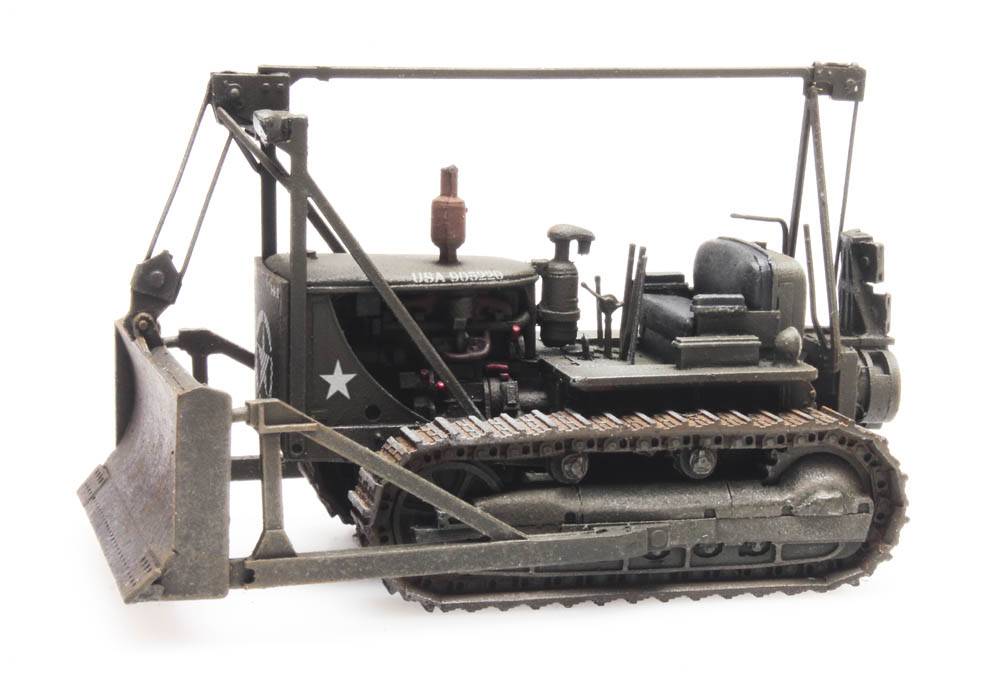
Photo: Sabot Publications An M9 at Aberdeen Proving Grounds in the 1980s. Note the individual armor panels on the side of the hull, protecting the Operator’s position. A side-on view of the M9 showing its unique profile. Once he has climbed into this channel, the operator can turn left and climb in through the cupola’s hatch. The Operator enters the vehicle through a cut out at the back of the M9 that doubles as a channel for the radiator to vent out through. The M9 also has an optional NBC (Nuclear, Biological, Chemical) protection system. Due to the location of the position, visibility was extremely poor, as the Operator could not see the ground directly in front of him. In combat conditions, however, the vehicle is operated with all hatches closed.

When operating head-out, a small windscreen with integrated wiper can be folded up to protect him from dust and debris. The operator is located at the rear left of the M9 under an armored cupola with eight vision blocks. It is no match for a tank shell or missile though. It is intended to protect him against small arms fire, shell shrapnel, or a mine detonation. This armor is in place to protect the single operator. This consists of welded aluminum with selected steel and aramid-laminated plates. Only the rear-most portion of the vehicle is armored. This was a feature that mostly went unused and consequently, most vehicles have had the amphibious equipment removed or it has simply gone unmaintained. In ideal conditions, the vehicle can travel in water at 3 mph (5 km/h) using the rotation of the tracks to propel it. The ACE’s lightness and compact size allow it to be air transportable by C-130 Hercules, C-141 Starlifter, C-5 Galaxy or C-17 Globemaster cargo aircraft. The M9 is 20 feet 6 inches (6.25 m) long, 10 feet 5 inches (3.2 m) wide, and 9 feet 6 inches (2.9 m) high. This light weight is partly due to its welded and bolted steel and aluminum construction. The ACE is lightweight at around 16 tons (16.3 tonnes), allowing it to be highly mobile. The M9 is not your every day 50 ton/tonne, earth-scraping, lumbering brute of a bulldozer.

Photo: Wisconsin History General Specifications & Features It is unknown where or when the photo was taken, but the location is likely that of the BMY proving grounds. The prototype Universal Engineering Tractor (UET) demonstrates its digging capabilities.

The first vehicles entered service in 1986, with production running into 1991. Due to budget cutbacks, however, only 448 of the vehicles were acquired. In total, 566 vehicles were ordered to be built.
Army d7 dozer specs full#
After some additional improvements to the design, a contract for full production was signed with Bowen-McLaughlin York (BMY, now owned by BAE Systems). Pacific Car and Foundry were given a contract to build no less than 15 prototypes, based on the cumulative design of the three co-developers. and Caterpillar Inc., was responsible for the initial development of the vehicle. The Engineer Laboratory at Fort Belvoir, Virginia, with added assistance from the International Harvester Co. What would go on to become the M9 appeared in 1977. One of the features of the UET was that it could also carry troops in the empty ballast bowl via fold-out seats. This nomenclature was later changed to Universal Engineering Tractor, or ‘UET’. Initially, this led to the development of a vehicle known as the All-Purpose Ballastable Crawler, or ‘ABC’, that was developed in 1958. Photo: DevelopmentĪ search for a battlefield engineering vehicle that was capable of earthmoving tasks had been sought since the mid-1950s.
Army d7 dozer specs upgrade#
To try and salvage the tattered reputation of the vehicle, an extensive upgrade program began in 2014, and, for now at least, these upgrades keep the M9 in service. Hydraulic and mechanical failures have plagued the ACE throughout its service life.

The first vehicles entered service 1986, with the vehicle serving in most major operations with the United States Military ever since, most notably in The Gulf War (1990-1991) and The War in Iraq (2003-2011).ĭespite all of their uses and features, the M9s were highly unreliable and, as such, loathed by the troops it was there to support. The M9 features a number of innovative features, such as a hydropneumatic suspension, a ballastable front end, and the ability to be amphibious. These include mobility (clearing a safe passage of blockages), counter-mobility (route-denial, the reverse of mobility tasks), and survivability tasks (constructing defensive positions). In combat operations, the M9 ACE can perform a number of tasks in support of friendly units. It is a valuable support vehicle to armored, mechanized and infantry units. The vehicle is intended as a highly mobile, protected earth moving vehicle for combat engineers. To put it simply, the Armoured Combat Earthmover M9, often just known as ACE, is a battlefield bulldozer.


 0 kommentar(er)
0 kommentar(er)
